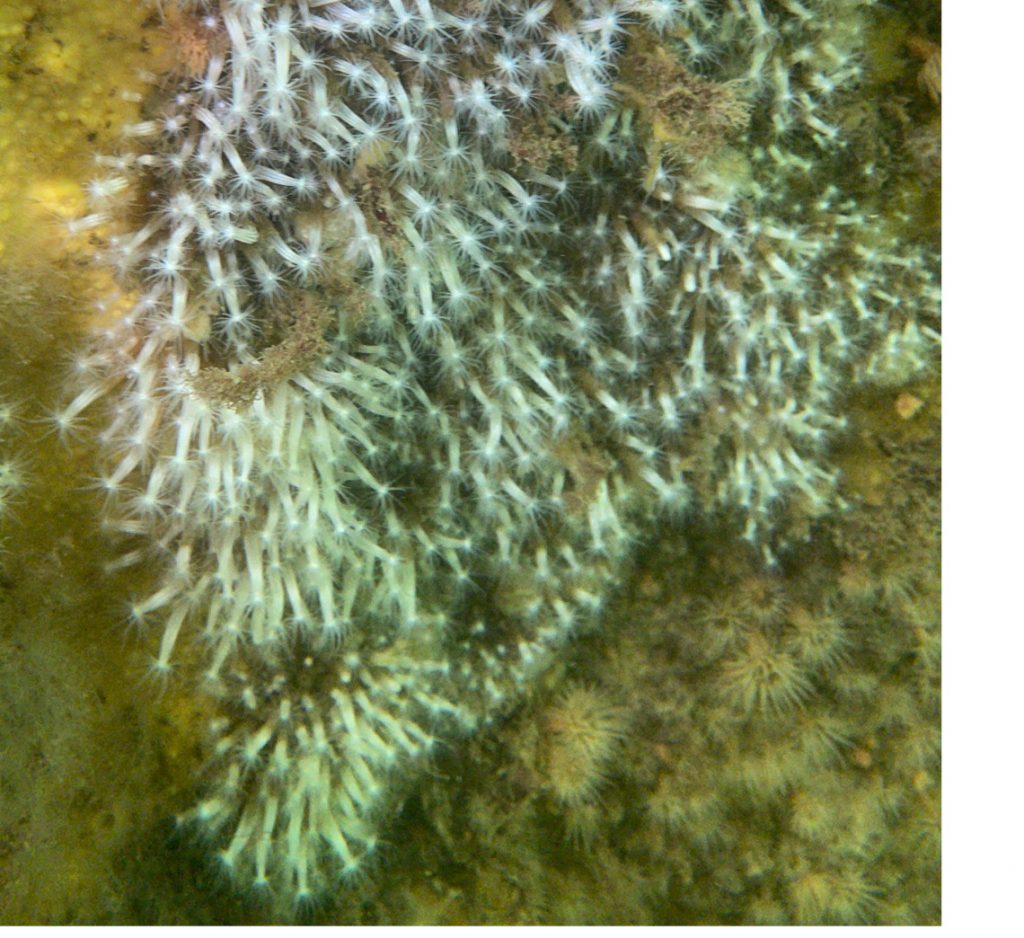By Kathy Czepiel, lands communications specialist, Save the Sound

© InnerSpace Scientific Diving
Last fall, we wrote about a 2021 scientific dive off the coast of Plum Island, NY. Now the results are in, and they provide a deeper understanding of findings from an earlier dive while documenting 126 species of plants and animals beneath the surface of Long Island Sound. The report, Survey of Plum Island’s Subtidal Marine Habitats, was prepared by the New York Natural Heritage Program (NYNHP) and InnerSpace Scientific Diving and sponsored by Save the Sound. You can read the full report for yourself at bit.ly/PlumIsland2022.
“Our scientists discovered a world of underwater biodiversity that few people get to see. Plum Island’s waters are home to a surprising diversity of life, existing mostly undisturbed beneath the surface. Our body of knowledge about this unique place continues to grow,” said Matthew Schlesinger, chief zoologist at NYNHP.
Located just off the tip of Long Island’s North Fork, Plum Island is an 822-acre gem of significant ecological and scenic sites; it also holds nationally-significant artifacts and historic buildings, including the National Register of Historic Places Plum Lighthouse (1869) and the National Register of Historic Places Fort Terry (1897) army barracks and weapons batteries. However, until recently, its underwater habitats were a relative mystery.
In August of 2021, four scientific divers made a collective 26 dives over five days, collecting information on the substrate, plants, and animals. They found new species not recorded in an earlier dive in 2019, including thousands of long, ghostly-looking white lined anemones attached to underwater boulders in one quadrat (meter-square sampling area). The number of species identified doubled over the previous dive, due in part to a larger dive team and a greater number of quadrats sampled (33 in 2019 vs. 57 in 2021). Double the number of algae species were identified, thanks to analysis by marine botanist and habitat restoration specialist Steve Schott of Cornell Cooperative Extension of Suffolk County, which also has been conducting marine research off Plum Island.
Divers also commented on the lack of marine debris. Unlike other locations in Long Island Sound, off Plum Island, “We didn’t find one piece of trash, one bottle, one bottlecap, not even a piece of fishing line on the bottom,” said Steve Resler, owner of InnerSpace.
Data from the new report suggest that different species are associated with the various substrate types found around Plum Island. For example, kelp was found in higher percentages when large boulders were present. “Having this quantitative data with cut-off values associated with different kinds of habitats allows us to start mapping subtidal natural communities,” said marine zoologist Meaghan McCormack of NYNHP. Plum Island’s coast and waters encompass several habitats rare for Long Island, including eelgrass meadows, rocky intertidal areas, and subtidal areas with large boulders.
“For one small island to have all these different natural communities surrounding it is really special,” McCormack said. “We want to know where they are because each might require a different kind of management strategy, a different kind of monitoring, so knowing the extent of these areas was really important.”
An ecological gem, Plum Island is home to federally threatened and New York State-endangered piping plovers; approximately 228 other bird species have been sighted there. In addition, it is the largest seal haul-out site in New York, playing host to up to several hundred harbor and gray seals each winter. Over 111 species of conservation concern have been documented. Turbulent Plum Gut, located between the tip of the North Fork at Orient Point and Plum Island, has been designated a “significant coastal fish and wildlife habitat” by New York State.
Plum Island is currently owned by the United States government and has been home to the Plum Island Animal Disease Center for nearly 70 years. The government now plans to dispose of the island, and the 120 organizational members in the Preserve Plum Island Coalition have been working to ensure its permanent conservation.
“The scientific dives around Plum Island really help to make the case for why Plum Island should be preserved in the national interest in perpetuity,” said Louise Harrison, New York natural areas coordinator for Save the Sound. “We think Plum Island deserves to be proclaimed a national monument or be preserved by other means available to the federal government. Scientists, historians, and people with ancient ties to Plum Island, together, have proven its 822 acres comprise a national treasure.” ■



